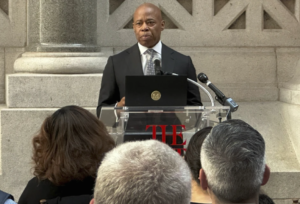A federal judge ruled late Thursday to continue blocking President Donald Trump’s orders for widespread layoffs across multiple government agencies, issuing a preliminary injunction that extends a temporary restraining order she granted earlier this month.
This new ruling is likely to intensify the legal battle, as the Justice Department has already taken the case to the Supreme Court, although the high court has yet to respond. Senior Judge Susan Illston of San Francisco went further than her previous order by requiring the reinstatement of employees who had been placed on administrative leave. However, she has temporarily paused this reinstatement requirement pending an appeal.
The lawsuit presents a significant challenge to the president’s effort to sharply reduce the federal workforce. Tens of thousands of federal workers currently on administrative leave under the challenged actions will remain on leave while Illston’s order stands. This decision is expected to trigger an appeals process about the extent of the president’s authority to cut agency staff without Congressional approval.
Emergency appeals of the earlier temporary restraining order are still pending in both the Supreme Court and the 9th U.S. Circuit Court of Appeals. Those courts may await the issuance of a preliminary injunction before intervening, as temporary restraining orders have limited appeal rights.
Judge Illston, appointed by former President Bill Clinton, stated in her opinion that while the president has the power to seek changes in executive agencies, such large-scale reorganizations require legal procedures and Congressional cooperation. At a recent hearing, she indicated she would likely grant the injunction, noting evidence suggesting the executive branch overstepped Congress’s constitutional authority.
The White House criticized the judge’s ruling. A spokesperson stated, “The court’s decision today represents an extreme judicial overreach into the executive branch. Congress has explicitly authorized the President, through the Office of Personnel Management, to implement workforce reductions across agencies. The President must maintain the ability to manage the Executive Branch, including necessary reductions in force, a practice in place for nearly 150 years. The administration expects a favorable outcome on this issue.”
The case centers on a February executive order from Trump aiming to “critically transform” the federal bureaucracy. Following that order, directives from the Office of Personnel Management (OPM) and the Office of Management and Budget (OMB) instructed agencies to submit plans for mass layoffs, known as reductions in force.
Plaintiffs in the case—including unions, local governments, and other groups—also challenged the involvement of the Department of Government Efficiency (DOGE). They argued that the top-down decisions from DOGE, OMB, and OPM, demanding extensive layoffs and disrupting agency operations, were unlawful.
Skye Perryman, President and CEO of Democracy Forward, one of the lead legal groups in the case, said, “With every move this President makes, we hold him accountable in court. Judges across the spectrum are defending the rule of law. We will continue to fight to protect the American people and democracy.”
The Justice Department argued that the layoff plans were preliminary and that agencies retained discretion to limit cuts so as not to disrupt their essential functions.
However, Danielle Leonard, attorney for the challengers, responded that “we don’t live in the hypothetical world government lawyers imagine.” She cited evidence showing that OPM and OMB rejected agency proposals that would have avoided drastic workforce reductions, effectively removing decision-making power from the agencies themselves.













